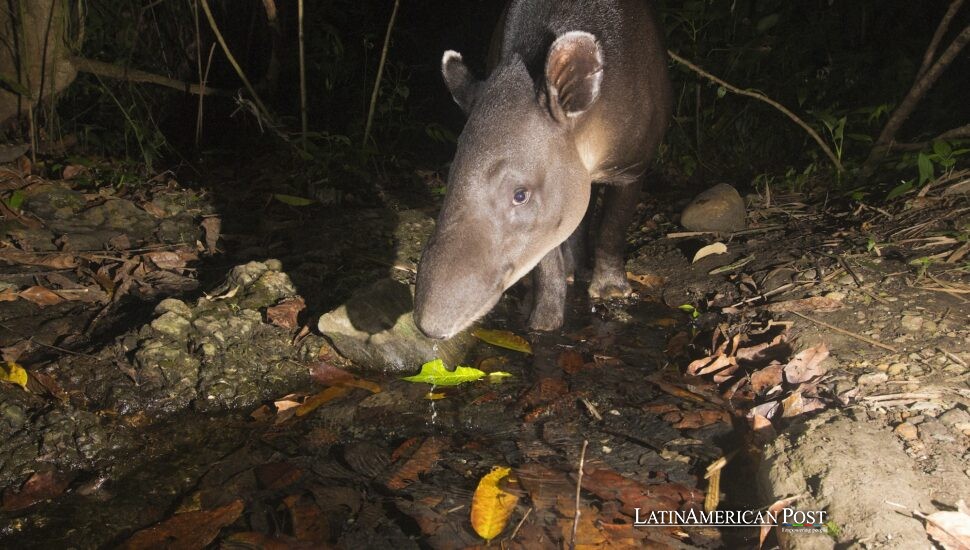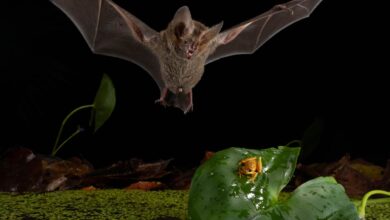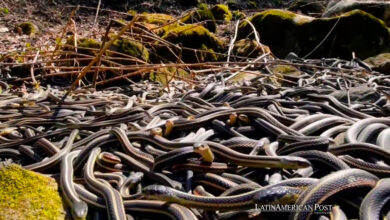Brazil's Atlantic Forest Reveals Legendary Tapir's Historic Return

The trail cameras in Brazil’s Atlantic Forest caught rare scenes of a tapir that experts considered extinct for over 100 years. A female, along with her young, appeared in images that proved this species still exists. The discovery shows how protected natural zones help animals survive.
Historic Rediscovery in the Atlantic Forest
In a breakthrough that has sent ripples through the conservation community, researchers in Brazil have recorded the long-elusive South American tapir making its way through the lush undergrowth of the Atlantic Forest. For more than 100 years, people thought the iconic mammal had disappeared from Brazil’s coastal areas. The last confirmed observations dated back to the early 1900s. A set of hidden trail cameras in Cunhambebe State Park caught images that changed a century-old story and brought new hope for the area’s endangered animals.
The footage, obtained by a team from Rio de Janeiro’s State Institute of Environment, shows a graceful female tapir and her calves ambling along a narrow forest trail. Conservationists have hailed the images as a historic comeback for South America’s largest land mammal. TCD (The Conservation Digest) credited multiple interviews with local experts and conservationists for providing context, emphasizing that “this sighting is not just a win for tapirs, but a triumph for all species fighting for survival in degraded habitats.”
Historically known as “the gardener of the forest,” the South American tapir plays a critical role in seed dispersal and forest regeneration. The animal spreads many plant species across large areas through its eating patterns, which helps the ecosystem stay healthy. The actions of hunting urban growth and forest destruction pushed the tapir close to extinction across its habitat over many decades. Its return to the Atlantic Forest ‒ a place with rich life forms at risk ‒ shows how nature can heal if left undisturbed.
A mix of residents and native tribes who respect the tapir as a sign of nature’s wealth now celebrates the return of an animal they thought existed only in stories. “Seeing the tapir again feels like a message from nature—a sign that if we protect our lands, even the most elusive species can return,” said a local ecologist interviewed by TCD. The rediscovery has already sparked renewed interest in conservation programs and has led to calls for expanding protected areas across the Atlantic Forest.
Protected Areas Prove Their Worth
The Cunhambebe State Park, which became a refuge in 2008, proves its worth as a home for rare species and diverse plant life. The area’s well-planned protection rules have made a natural space where animals live safely away from cities or factories. According to TCD interviews with park officials, the protected status of Cunhambebe has allowed populations of several native species—some once on the brink of extinction—not only to persist but also begin to flourish.
The return of tapirs shows how well the conservation work has paid off. “Protected areas help us keep animals from vanishing,” a spokesperson from the Rio de Janeiro State Institute of Environment said in a TCD-led interview. “The tapirs returned because we kept the land safe, managed habitats, and worked with local people.” This perspective resonates among conservationists across Brazil, who see sanctuaries as vital for stopping species decline in the Atlantic Forest.
The success at Cunhambebe State Park has led other regions in Brazil to study similar conservation plans. Many experts see this recovery as a guide for more significant efforts to fix nature’s balance in the country. As deforestation rates stay high in parts of Brazil, protecting forest sections has become more pressing. The tapir’s return shows how these methods work, proving that protected areas do more than save what exists ‒ they let nature recover.
The tapir’s story has caught global notice. Conservation groups worldwide point to this rediscovery as proof that hope remains despite environmental damage. Some people doubt that small victories will scale up to solve biodiversity loss, but the tapir’s return proves that focused conservation plans bring remarkable results.
The Ecological Role and Cultural Impact of the Tapir
The South American tapir serves as the “gardener of the forest” with a unique role in nature. A remarkable herbivorous mammal, it helps to keep tropical forests alive. The tapir eats fruits or leaves and spreads seeds across broad areas. This action allows forests to grow back along with better plant variety. Such work matters for the forest and many animals that need these places to live.
Research from TCD reveals that tapirs create more value than seed dispersal. The trails it cuts through the forest serve as passages that let other animals move or aid plant development. These natural corridors become key networks that connect separate forest sections. A tapir acts as a pioneer, opening paths for nature to rebuild in the Atlantic Forest.
The tapir holds deep meaning in Brazilian culture. Local stories and native traditions see it as a sacred animal showing nature’s survival power. Its loss in the last hundred years hurt nature and the people who saw it as part of their roots. A recent find of tapirs brought back pride to these groups. The tapir is proof of how people connect to their land through time.
“In our folklore, the tapir is a guardian of the forest,” remarked an elder from a local Indigenous community during a TCD-facilitated discussion. Its return reminds us that nature always finds a way, even when we believe it has been lost forever.” Images of tapir families on social media or local news outlets sparked feelings of hope next to nostalgia. A mix of cultural revival combines with science reports to form a story of rediscovery that speaks to people’s emotions and logic.
The tapir’s return shows how nature protection benefits everyone. It proves the need to save habitats for animals and human communities. A healthy area full of diverse life provides basic needs like clean air, water, and soil that support human life. The tapir’s comeback proves that all forms of life benefit when we protect nature.
Challenges and Future Prospects for Biodiversity
The success of the tapir’s return brings joy, but conservation experts remain careful about claiming success. The Atlantic Forest, which once covered much of Brazil’s coast, now exists in small separate areas because of logging farms and city growth. These sections face threats from human expansion or weather changes. The survival of animals like the tapir depends on continued protection work.
TCD talked to experts who say single victories must fit into a larger plan. “The tapir’s comeback gives us hope,” a leading Brazilian ecologist told TCD, “but shows the big tasks ahead. We can only save one animal by protecting whole natural areas.” Many conservation workers agree that protecting major species like tapirs helps create rules that protect other animals.
The future protection of life in the Atlantic Forest needs major support for science or community work. Scientists want more money to fix damaged areas, better rule enforcement, and new protected zones. More people now understand that residents must join these efforts. Local communities should benefit from protecting their natural resources.
A good sign comes from eco-tourism’s possible role. The tapir’s return excites people, which creates opportunities for tourism that helps local economies or protects natural spaces. TCD found that when other animals recovered in different places, it brought money to rural areas. Brazil could use the Atlantic Forest to attract nature-loving visitors, which would connect business interests with environmental care.
But many questions remain. The reasons for forest loss run deep in Brazil’s economy and politics. Big farms and mines next to growing cities still harm the Atlantic Forest. Changes in national politics affect protection efforts. The tapir’s return indicates improvement but fails to address all problems. A call to action remains necessary to protect this remarkable ecosystem.
Also Read: Google’s AI Search Summaries Launch in Mexico Amid Controversy
For many conservationists, the lesson of the tapir is clear: even species once thought lost can reappear if given a fighting chance, but their survival depends on the strength of the protective measures in place. TCD has recorded many examples where protected zones helped animals return. The success of each project depended on lasting support, science-based tracking along with active help from local people. A tapir rediscovery will likely become a new success story that shows what happens when nature takes back its space.





